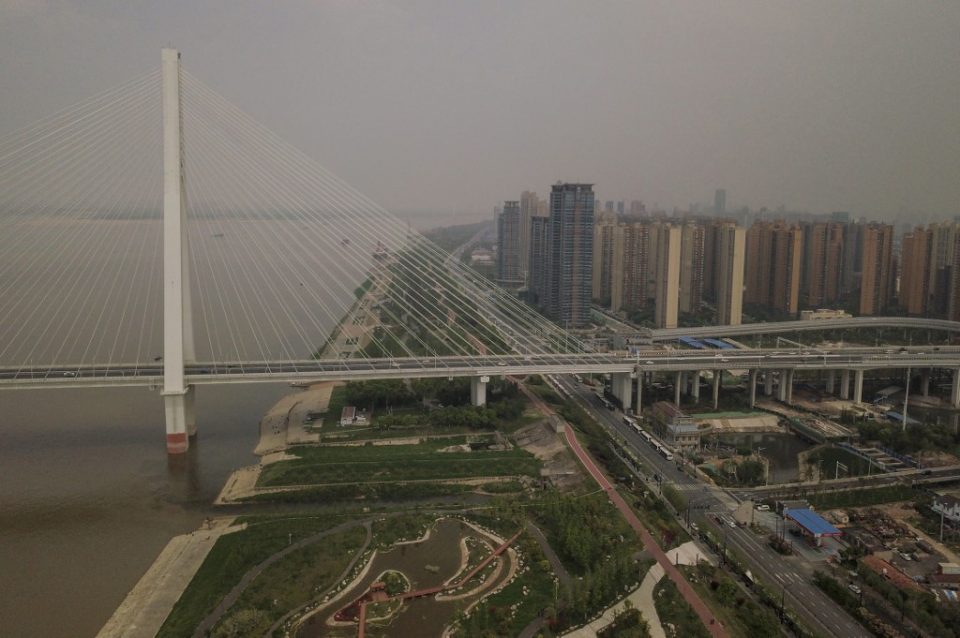
by Chris Lefkow with Jing Xuan Teng in Wuhan
WASHINGTON, United States (AFP) — China lifted a travel ban on Tuesday on residents of Wuhan, where the coronavirus pandemic began last year, and reported no new deaths, but the situation remained grim elsewhere as Britain and New York State recorded their highest number of fatalities yet.
British Prime Minister Boris Johnson remained in intensive care, meanwhile, after being admitted to a London hospital on Monday evening, 10 days after being diagnosed with the virus.
His spokesman said the 55-year-old Conservative leader was in stable condition and “good spirits.” He was receiving “standard oxygen treatment” and has not required a ventilator.
The shocking hospitalization of a major world leader underscored the global reach of COVID-19, which has put more than four billion people — over half of the planet — on some form of lockdown, upended societies and battered economies worldwide.
Amid warnings that worse is yet to come, death tolls mounted in a crisis that has now claimed more than 80,000 lives out of nearly 1.4 million confirmed cases around the world.
While other major cities around the world remained locked down, thousands of people rushed to leave Wuhan after the Chinese authorities lifted a more than two-month ban on travel from the city in Hubei Province.
“Wuhan people have paid a big price,” a 21-year-old man surnamed Yao said at the Wuchang train station.
“Now that the lockdown has been lifted, I think we’re all pretty happy,” said Yao, who was heading back to his restaurant job in Shanghai.
Flights also resumed at Wuhan’s international airport and roadblocks were removed around the city.
The National Health Commission said Tuesday that no new deaths had been logged in the preceding 24 hours, the first fatality-free day since China began publishing figures in January.
China’s official tally is some 81,000 overall infections and more than 3,300 deaths but there are suspicions Beijing has under-reported the real numbers.
‘Eye of the storm’
Britain reported 786 new deaths and New York state saw 731 in 24 hours, after Spain, France and Italy all recorded new surges in fatalities.
New research showed Britain’s toll on a steeper trajectory than other nations and predicted as many as 66,000 deaths by July, far more than in Italy, which has the highest fatalities to date — 17,127.
Paris on Tuesday banned daytime jogging to keep people from bending anti-coronavirus lockdown rules as France breached 10,000 deaths.
But there were glimmers of hope in the statistics.
Spain said its downward trend in new infections and deaths was continuing and increases in fatalities on Monday and Tuesday were the result of weekend deaths being tallied.
Eduardo Fernandez, a 39-year-old nurse at Madrid’s Infanta Sofia Hospital, said there had been fewer admissions in recent days.
“But we remain much above our usual capacity,” he cautioned.
“I don’t know if my colleagues who are in the eye of the storm are able to see (the decrease) because the work pressure is very high.”
Iran’s parliament convened for the first time since late February as the country reported a drop in new infections for the seventh straight day.
China and other Asian nations have raised alarm over a possible second wave of infections, and Beijing only started gradually easing restrictions in Wuhan in recent weeks.
‘THIS IS RIDICULOUS’
In New York, the epicenter of the US outbreak, Governor Andrew Cuomo said the state appeared be nearing the peak of its pandemic, with a three-day average of hospitalizations down.
Intensive care admissions and intubations also declined.
He said social distancing was working and urged New Yorkers to remain indoors.
“I know it’s hard but we have to keep doing it,” Cuomo said.
Despite stay-at-home orders in another US state, Wisconsin, voters were going to the polls to cast ballots in the Democratic presidential primary and local elections.
The governor of the midwestern US state attempted to postpone the election through executive order, citing the risks to poll workers and voters, but was overruled by the Wisconsin Supreme Court.
The Milwaukee Journal-Sentinel showed a mask-wearing woman in line to vote at a high school holding a sign bearing a message summing up her view of voting during a pandemic: “THIS IS RIDICULOUS.”
As the virus continues to exact a deadly toll worldwide, people have been forced to improvise, with bodies packed in cardboard coffins in Ecuador and a city official in New York raising the possibility of carrying out temporary burials in a public park.
New York City funeral home director Pat Marmo said he was dealing with three times more bodies than normal. “It’s almost like 9/11, going on for days and days and days,” he said.
Economic fallout
Governments are scrambling to put together rescue packages to stem the economic damage from effectively shutting down global commerce, as fears loom of a devastating recession.
The UN’s International Labour Organization said 81 percent of the global workforce of 3.3 billion people are now affected by “the worst global crisis since the Second World War.”
Japan, which declared a month-long state of emergency on Tuesday, has promised a $1-trillion stimulus package, a staggering 20 percent of GDP in the world’s third-largest economy.
With the ink barely dry on a $2-trillion economic rescue package passed by Congress, US President Donald Trump has said he favors another massive spending program, worth another roughly $2 trillion, but this time targeting infrastructure projects.
EU finance ministers were working on a deal to use the eurozone’s 410-billion-euro ($447 billion) bailout fund to fight the virus but the bloc remains divided on pooling debt to issue “coronabonds.”
Stock markets were up across Asia and Europe but Wall Street finished slightly lower.
The EU announced it would put up 15 billion euros to help developing countries fight the epidemic, which is only starting to spread in some of the world’s poorest countries.
© Agence France-Presse







